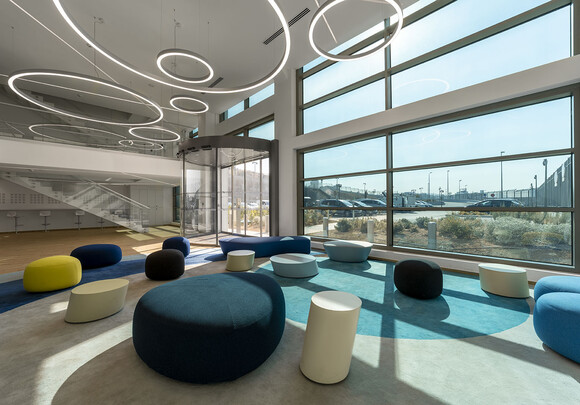Data center MRS2
The Challenge
MRS2 is the second data center operated in Marseilles by Interxion, a leading European colocation provider. A colocation (colo) is a data center facility in which a business can rent space for servers and other computing hardware. Typically, a colo provides the building, cooling, power, bandwidth and physical security while the customer provides servers and storage. For several years, the city has been staking its claim as a global strategic hub for digital data exchange, thanks to its geographical position at the intersection of many underwater telecommunications cables; this data center was built in response to growing demand from global connectivity and content providers, as well as cloud platforms wishing to deliver their services and applications in Europe, Africa, the Middle East and Asia.
Located at Marseilles’ Grand Port Maritime, MRS2 is housed in two hangars dating to the 1950s which were originally designed for naval repairs. The buildings have been fully renovated: only the concrete structure has been preserved, the construction having been designated a heritage site. The southern façade and the front of the eastern and western façades have been glazed.
Energy consumption in data centers is high, as it is particularly important to ensure a consistent temperature for servers. At Interxion, environmental responsibility is a priority: as evidence of this, 100% of the energy used comes from renewable sources; this is also the case for the data centers at its Marseilles campus. The group is constantly innovating to improve both the design of its data centers and the management of its energy consumption, thanks to the efforts of dedicated teams of engineers and cutting-edge technical solutions.
As temperatures in Marseilles can be high during summer, the transfer of energy onto the glazed part of the façade overlooking the building’s entrance hall had to be limited. The aim was to reduce the use of air-conditioning as much as possible and ensure the comfort of visitors and employees without blocking the view of the outside.
The Solution
SageGlass dynamic glazing was chosen for most of the glass façade. Thanks to its tinting capability, which varies according to the conditions outdoors, dynamic glazing regulates the entry of heat into the building, thus limiting the use of air conditioning to offset it. Even at maximum tint, the smart glass stays transparent, preserving the view outdoors.
The Benefits
Thanks to SageGlass, visitors and employees at MRS2 will enjoy a pleasant reception area throughout the year, and the use of air conditioning to counteract heat from the sun entering the building can be limited.
The innovation on display with SageGlass smart glazing, which has transformed MRS2 into a connected building, is fully in line with Marseilles’ ambition to become ‘southern Europe’s smart city’ by placing digital transition at the heart of its strategy. The Interxion data center campus in Marseilles was also named ‘best data center location’ at the Data Cloud Awards 2017, while the Organization for Economic Co-operation and Development (OECD) classes Marseilles among the most innovative cities in the world.




